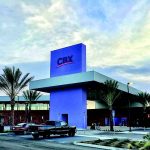success story
Sweetwater Authority II
Water Authority

Sweetwater Authority (SWA) is a public water utility that’s operated since 1977. It provides water to approximately 200,000 residents in a 36 square-mile area of San Diego’s South Bay, which includes overlapping areas of National City, Chula Vista, and Bonita, California.
Transformative Insights: Enhancing Developer Engagement and Efficiency at Sweetwater Authority
Challenge
All water authorities recognize the importance of supporting land developers. This might include streamlining processes by which builders obtain water permits and approvals, or ensuring that water regulations are transparent and efficient. Maybe it includes identifying ways to optimally integrate water infrastructure into development projects during their planning phases, or supplying guidance toward sustainable water management practices during later phases.
What’s most critical for developer-friendly water authorities, though, is that they actively engage developers upfront in order to thoroughly understand their true needs. Getting this right ensures that the water authority obtains a good return on its support efforts. Not reaching out to developer clients, or doing it poorly, wastes time and treasure on processes that don’t address pressing issues. After all, why risk guessing what developers need if you can reach out and ask?
Sweetwater Authority enjoyed what it perceived to be a good relationship with developers, receiving kudos from time to time for a job well-done. On occasion, it heard an earful from a developer who was dissatisfied. SWA recognized the informal nature of such feedback, and decided in 2021 that it was time to implement a more formal and systematic developer discovery and feedback process. This would help promote continuous improvement, transparency, and accountability in the organization. Specifically, SWA wanted insights to help them more effectively partner with and serve developers, with the goal to earn higher satisfaction marks both internally and externally. Yet with so many kinds of development projects across widely varying timelines, SWA faced the difficult task of finding a suitable approach. They decided they were less interested in quantitative metrics, and more interested in leveraging the power of dialogue to probe common patterns of success and concern across projects. They presumed focus groups were the best way to go, and released an RFP. Competitive Edge Research & Communication’s (CERC) thirty year history and strong track record won the work.
The Situation at Sweetwater
Sweetwater Authority enjoyed what it perceived to be a good relationship with developers, receiving kudos from time to time for a job well-done. On occasion, it heard an earful from a developer who was dissatisfied. SWA recognized the informal nature of such feedback, and decided in 2021 that it was time to implement a more formal and systematic developer discovery and feedback process. This would help promote continuous improvement, transparency, and accountability in the organization. Specifically, SWA wanted insights to help them more effectively partner with and serve developers, with the goal to earn higher satisfaction marks both internally and externally. Yet with so many kinds of development projects across widely varying timelines, SWA faced the difficult task of finding a suitable approach. They decided they were less interested in quantitative metrics, and more interested in leveraging the power of dialogue to probe common patterns of success and concern across projects. They presumed focus groups were the best way to go, and released an RFP. Competitive Edge Research & Communication’s (CERC) thirty year history and strong track record won the work.
Response
As with all client discovery engagements, CERC carefully reviewed the accepted proposal with the client and listened closely to SWA’s needs and concerns. Although CERC could conduct the project as specified, it became clear to CERC President John Nienstedt that his firm could add significant value by modifying its parameters.
CERC isn’t just a check-the-box kind of firm; the goal is to help clients. So CERC suggested In-Depth Interviews (IDIs) instead. These interviews would include developers working with SWA, as well as developers who work in nearby jurisdictions. This methodology would yield the richest qualitative data for SWA, provide context for the evaluation of SWA interviews, and supply insights through competitive analysis. It would empower CERC to explore fundamental developer perceptions of SWA. Crucially, it would also give developers a confidential environment in which to freely express their opinions and criticisms. Its final feature would include a way for developers to evaluate the project afterwards.
CERC isn’t just a check-the-box kind of firm; the goal is to help clients. So CERC suggested In-Depth Interviews (IDIs) instead. These interviews would include developers working with SWA, as well as developers who work in nearby jurisdictions. This methodology would yield the richest qualitative data for SWA, provide context for the evaluation of SWA interviews, and supply insights through competitive analysis. It would empower CERC to explore fundamental developer perceptions of SWA. Crucially, it would also give developers a confidential environment in which to freely express their opinions and criticisms. Its final feature would include a way for developers to evaluate the project afterwards.
Solution Set
CERC conducted a series of in-depth interviews (IDIs) in 2021 with development firm personnel who have worked with SWA and, separately, development firm personnel in San Diego County who have not worked with SWA. The study was designed to develop an understanding of SWA’s strengths and weaknesses and to derive comparisons to other local water agencies. It also included the creation of a post-project evaluation survey for SWA to use with its developer customers.
Key Findings
The 2021 in-depth interviews revealed data that wouldn’t have surfaced otherwise. They established that SWA is doing well in the minds of developers relative to other districts. Every agency has challenges, but it’s clear that SWA is perceived positively relative to others. Regarding relationship dynamics with developers, the majority can’t point to a specific reason why things are going right with SWA – but neither do they have any major issues. Positive interactions with SWA personnel stand out, however. Communication and responsiveness were highlighted. Overall, there’s significantly more positive emphasis on the virtues of SWA personnel than its process.
The most actionable revelation was that SWA could improve its project approval system. It was perceived as slow. However, it was also discovered through non-SWA developer interviews that almost all water agencies are perceived as slow. In fact, while developers who operate within SWA’s jurisdiction feel that SWA might be slower than its counterparts, the authority actually appears to be faster than the usual norm. This perceived lack of promptness likely explains why technology improvements bubbled up as a desire among SWA’s developers. Several mentioned electronic tracking and online transactions as improvements that could help them.
The most actionable revelation was that SWA could improve its project approval system. It was perceived as slow. However, it was also discovered through non-SWA developer interviews that almost all water agencies are perceived as slow. In fact, while developers who operate within SWA’s jurisdiction feel that SWA might be slower than its counterparts, the authority actually appears to be faster than the usual norm. This perceived lack of promptness likely explains why technology improvements bubbled up as a desire among SWA’s developers. Several mentioned electronic tracking and online transactions as improvements that could help them.
Results
SWA was responsive to the 2021 research findings and formed a Survey Commission. That commission didn’t just discuss the findings, it acted on them. It incorporated interview insights regarding personnel and developer interactions into a newly-devised continuous improvement process. SWA also hired an additional staff member. This new process minimized unfavorable service interactions with developers and eliminated occasional developer phone calls to board members.
SWA also built an online portal for developers to track their projects. This portal is frequently utilized and highly valued. Now, developers can check their SWA project’s status without needing to pick up the phone or fire off an email. It provides organized and easily accessible project information, while reducing miscommunication errors. Developers like being able to follow SWA’s processing of projects each step of the way, when and where required. The portal thus offers a new level of transparency between SWA and its developers. It also frees up SWA personnel to collaborate with developers on less routine matters, and thereby contribute their high-value authoritative expertise on projects.
CERC’s post-project survey that SWA administered generated additional developer feedback, thereby emphasizing once again SWA’s role as a collaborator and team player in its developer community.
SWA also built an online portal for developers to track their projects. This portal is frequently utilized and highly valued. Now, developers can check their SWA project’s status without needing to pick up the phone or fire off an email. It provides organized and easily accessible project information, while reducing miscommunication errors. Developers like being able to follow SWA’s processing of projects each step of the way, when and where required. The portal thus offers a new level of transparency between SWA and its developers. It also frees up SWA personnel to collaborate with developers on less routine matters, and thereby contribute their high-value authoritative expertise on projects.
CERC’s post-project survey that SWA administered generated additional developer feedback, thereby emphasizing once again SWA’s role as a collaborator and team player in its developer community.







